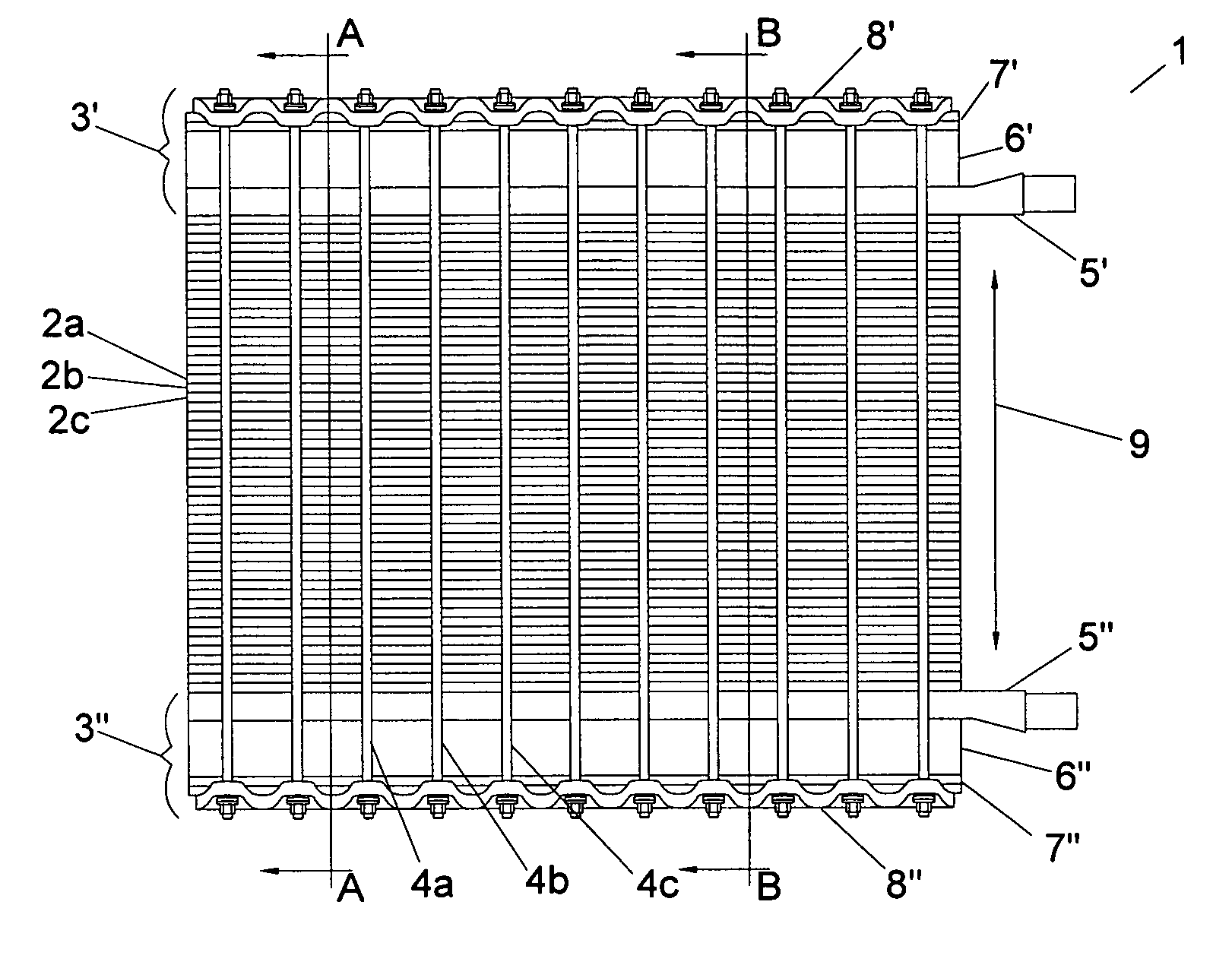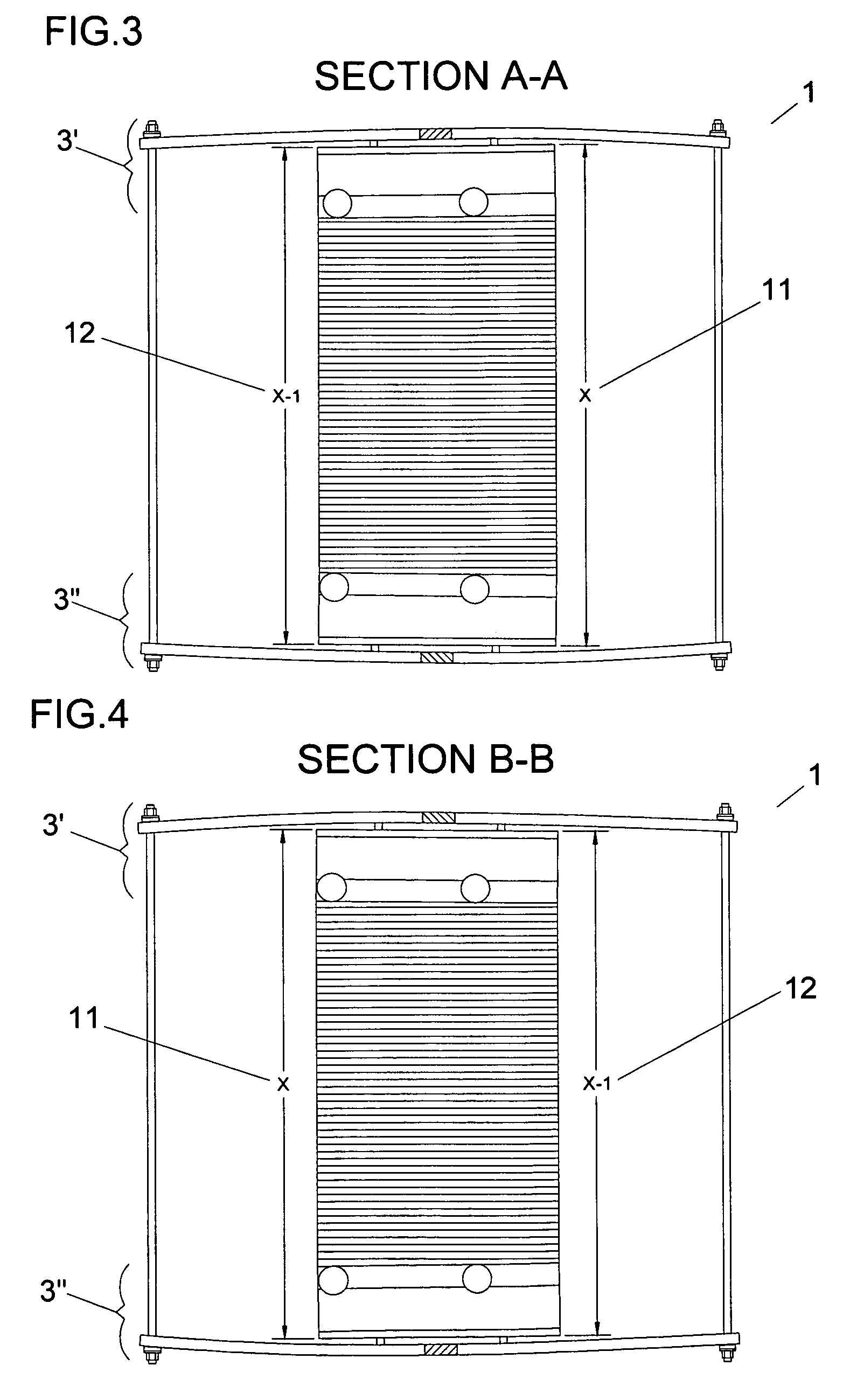Fuel cell stack compression assembly
a fuel cell stack and compression assembly technology, applied in the field of fuel cell stacks, can solve the problems of non-uniform compression non-repair of the fuel cell stack, and non-repair of the fuel cell stack, and achieve the effect of uniform compression and effective mounting methods
- Summary
- Abstract
- Description
- Claims
- Application Information
AI Technical Summary
Benefits of technology
Problems solved by technology
Method used
Image
Examples
Embodiment Construction
[0029]FIG. 1 illustrates a fuel cell stack 1 such as a fuel cell stack described by U.S. Pat. No. 6,670,069 incorporated herein in its entirety by reference. The fuel cell stack 1 is comprised of a plurality of individual cells 2a, 2b, 2c stacked upon one another. Proper functioning of the individual cells 2a, 2b, 2c requires that they be maintained in intimate and uniform contact at the mating faces of each cell. Uniform contact is typically maintained with the application of opposing compressive loads applied to the axial ends of the fuel cell stack 1 by opposing compression assemblies 3′, 3″ mechanically coupled by a plurality of tie rods 4a, 4b, 4c. Compression assembly 3′ includes end plate manifold 5′, such as the end plate manifold described U.S. patent application Ser. No. 10 / 755,722 incorporated in its entirety by reference, thermal insulation 6′, compression plate 7′ and compression distribution plate 8′.
[0030] During assembly and operation of the fuel cell stack 1, vario...
PUM
| Property | Measurement | Unit |
|---|---|---|
| temperatures | aaaaa | aaaaa |
| temperatures | aaaaa | aaaaa |
| temperatures | aaaaa | aaaaa |
Abstract
Description
Claims
Application Information
 Login to View More
Login to View More - R&D
- Intellectual Property
- Life Sciences
- Materials
- Tech Scout
- Unparalleled Data Quality
- Higher Quality Content
- 60% Fewer Hallucinations
Browse by: Latest US Patents, China's latest patents, Technical Efficacy Thesaurus, Application Domain, Technology Topic, Popular Technical Reports.
© 2025 PatSnap. All rights reserved.Legal|Privacy policy|Modern Slavery Act Transparency Statement|Sitemap|About US| Contact US: help@patsnap.com



